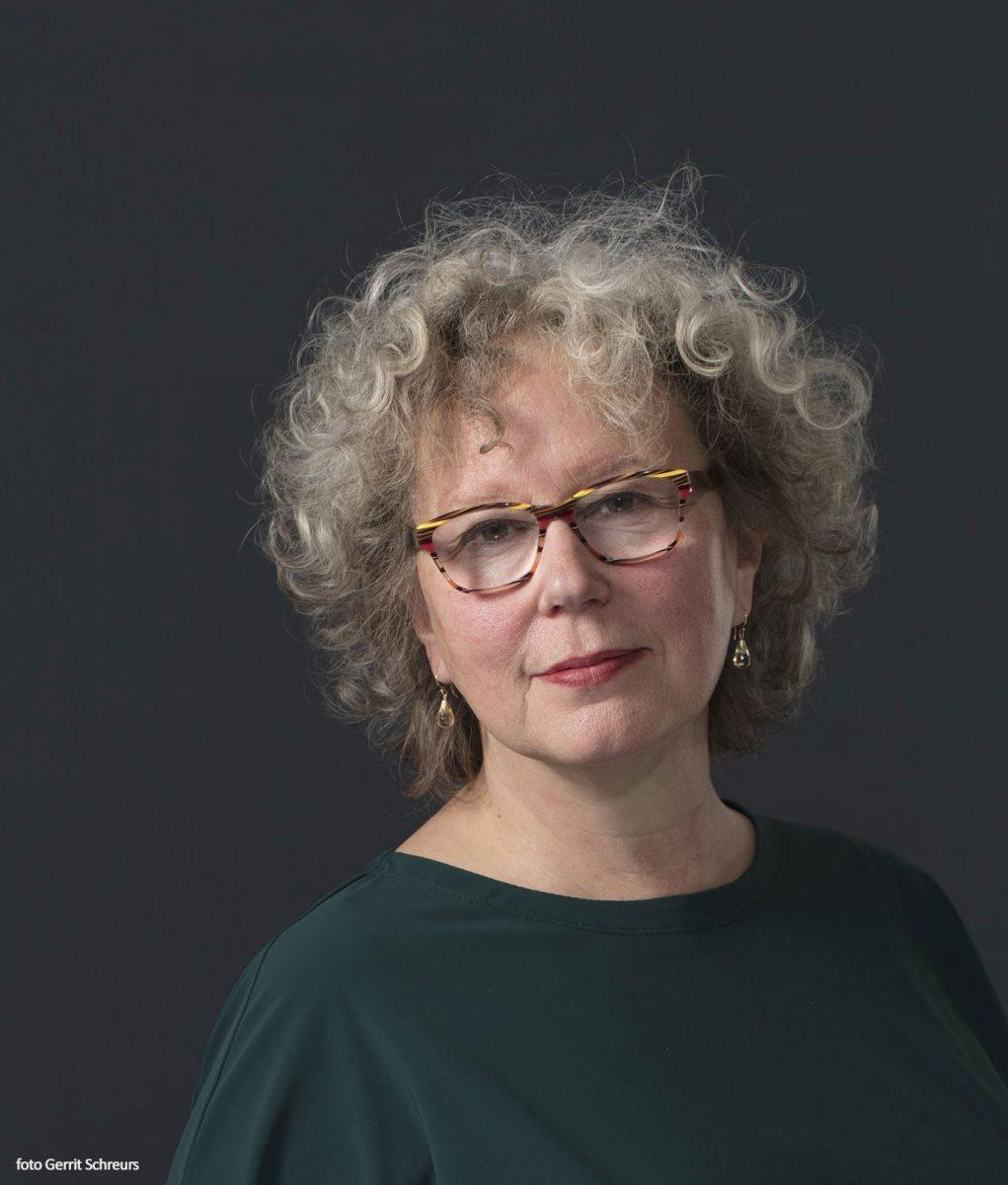
Besides selling his prints, Escher made a living from undertaking commissions. Examples include his pattern designs for a glass ceiling at the Philips lighting factory, wooden panels for the City Hall in Leiden and for a tiled façade on a high school in The Hague. He often applied tessellations when working on such commissions. The confectionery tin designed by Escher in 1962/3 is no exception. This unique piece was commissioned by Verblifa (Vereenigde Blik Fabrikanten, United Tin Can Producers), which at the time was headquartered in Krommenie, to mark the company's 75th anniversary. Each tin was filled with bonbons for employees, clients and business associates.
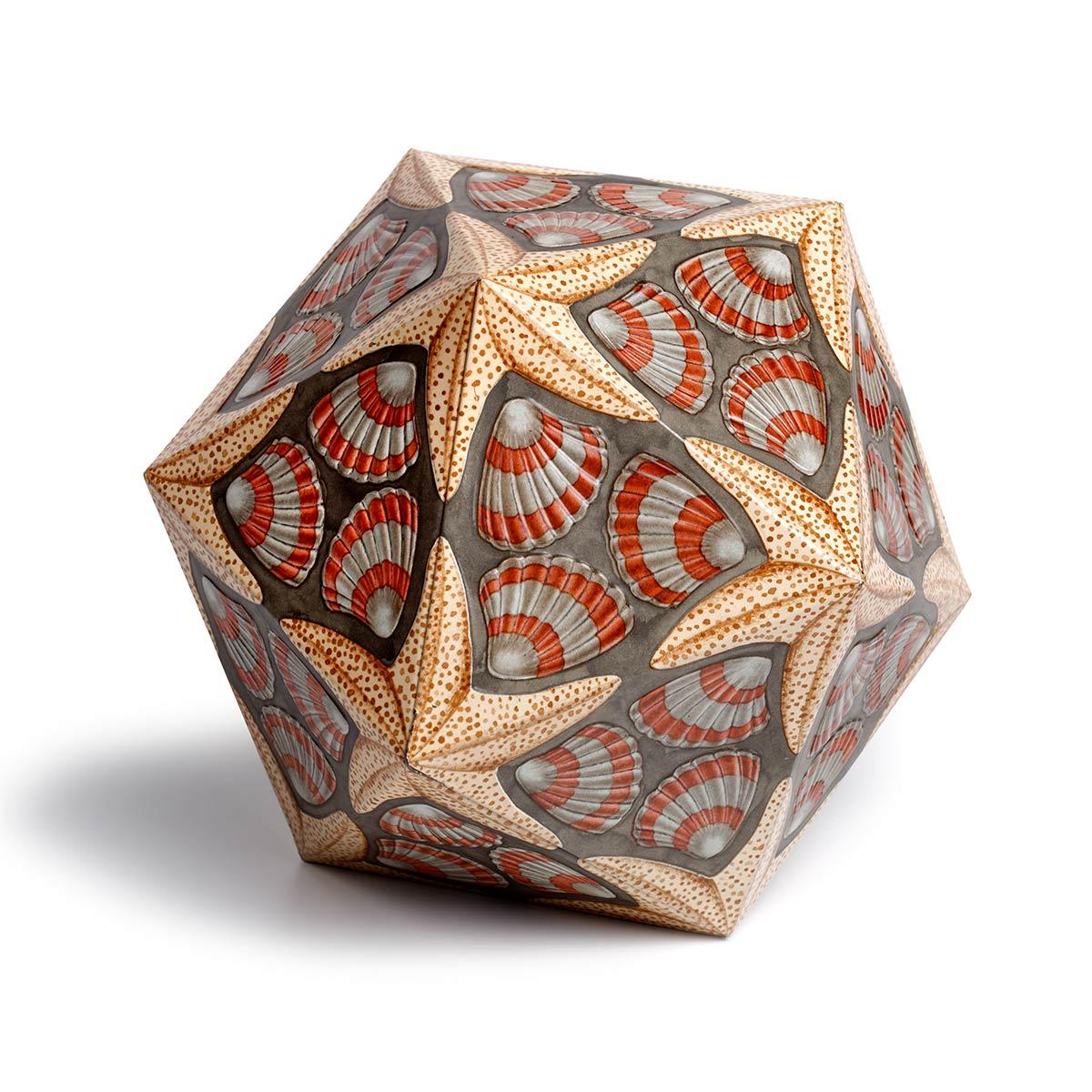
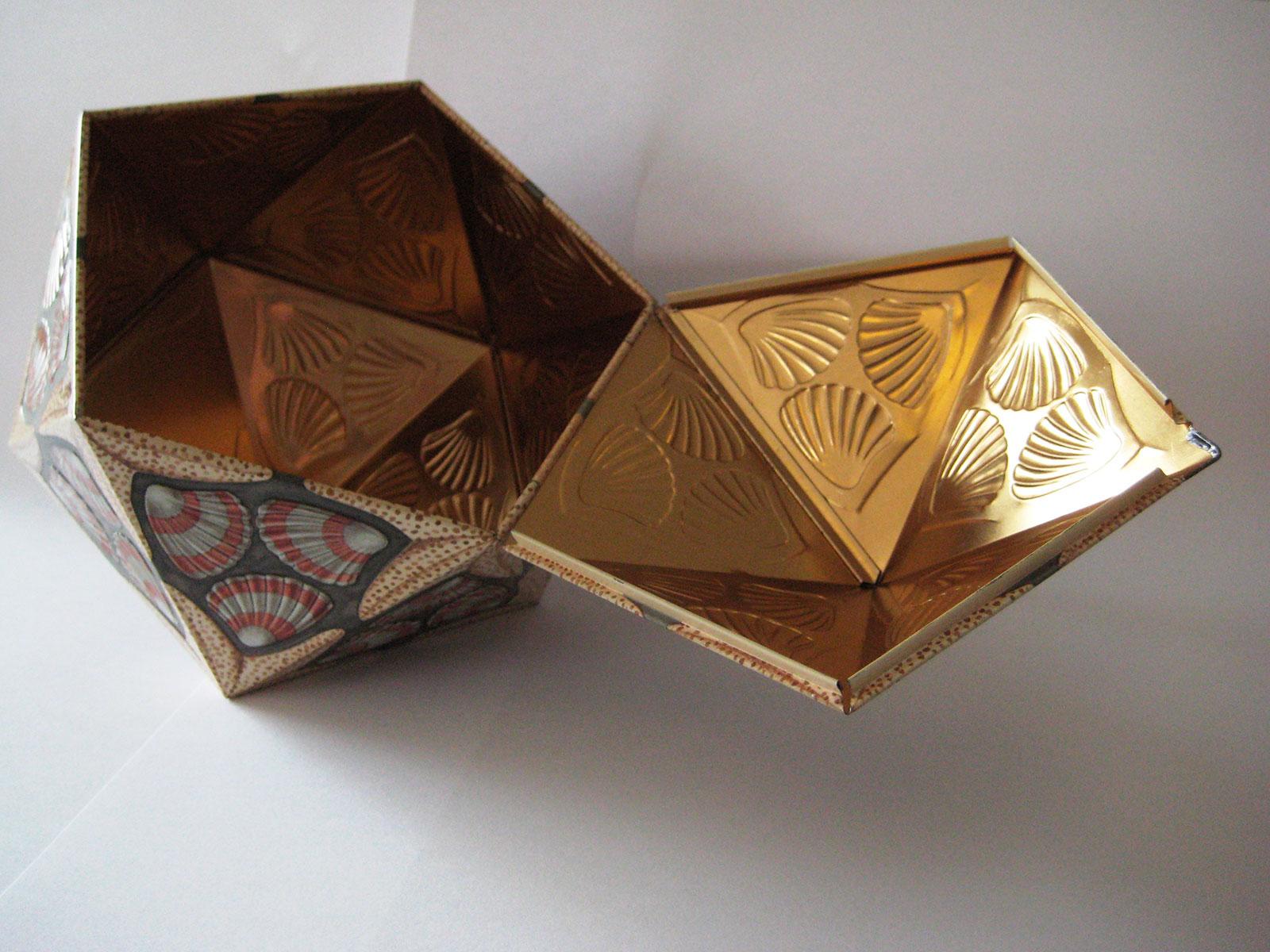
The tin has been gifted to Escher in The Palace by the firm Impress BV, which acquired Verblifa following a merger. Their archives include a fascinating account from a former employee, Mr Van der Grijn, about the collaboration between Verblifa and Escher. Via the organisation Kunst en Bedrijf, the company was put in touch with M.C. Escher, who by then was an established and renowned artist. In the winter of 1962, the Sales Director, Mr Bouvy, along with a handful of other executives, headed in the company's 'Executive Mercedes' for Baarn, the village in the middle of Holland where Escher lived. Here, they had an exceedingly pleasant conversation with Escher in his studio. However, to the gentlemen's disappointment, Escher informed them that, as an 'artist arrivé', these types of commissions no longer interested him. In his report, Van der Grijn paraphrased Escher's words as follows:
in his 'poverty-stricken' days, when he was residing in Italy (1922-1934), he would have jumped for joy and been honoured to undertake such a sought-after commission.
Icosahedron
Although seeds of doubts had been planted in the minds of the Verblifa delegation, the gentlemen summoned their “white-gloved chauffeur” to fetch the entire collection of tins from the Mercedes to demonstrate the technical possibilities of the factory. Escher had been fascinated by a tin designed in 1955 for Verkade, a Dutch biscuit and confectionery company, entitled Koh-I-Noor. The tin in question was an octagonal antiprism. “The shape fascinates me,” Escher told them. The factory representatives, however, felt overwhelmed by the challenge of turning such a complex shape into a relatively small production run of 7,000. Understandably, they returned to the factory in a subdued mood. They had been impressed by Escher and his work, and were confident that a wonderful collaboration could be struck up. However, no concrete agreements had been drawn up. Escher was clearly reluctant to commit himself.
A week later, another Verblifa delegation was despatched to Baarn. To their amazement and delight, Escher informed them that he had devised a solution for the production run.
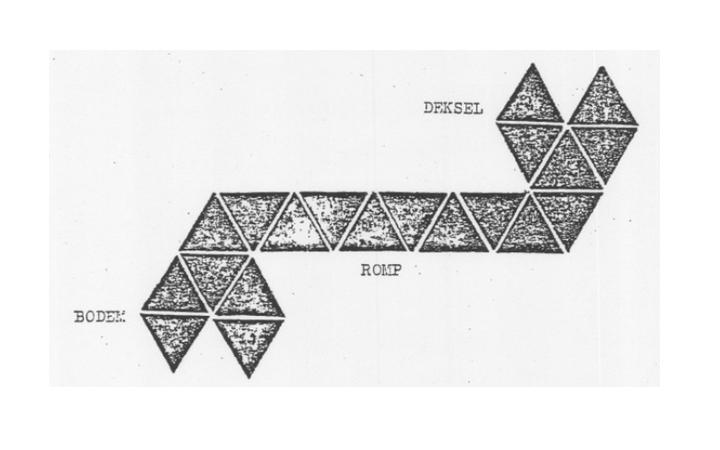
Design by Escher for the Verblifa tin
Escher’s method ensured that all of the more than 7,000 tins could be easily cut out without losing extra space, is material. Nevertheless, the team still had reservations. This was a technological tour de force.
“We were literally ‘looking up’ to a Herculean challenge; 20 (!) triangular faces, 30 ribs and 12 vertices, with 5-fold symmetry around each vertice! A feat never before accomplished in 75 years of tin manufacturing, and presumably never before then either.”
Back in the factory in Krommenie, everyone was becoming increasingly enthusiastic about Escher's solution. Eventually, the company consented to the production run, presumably because of the technological challenge.
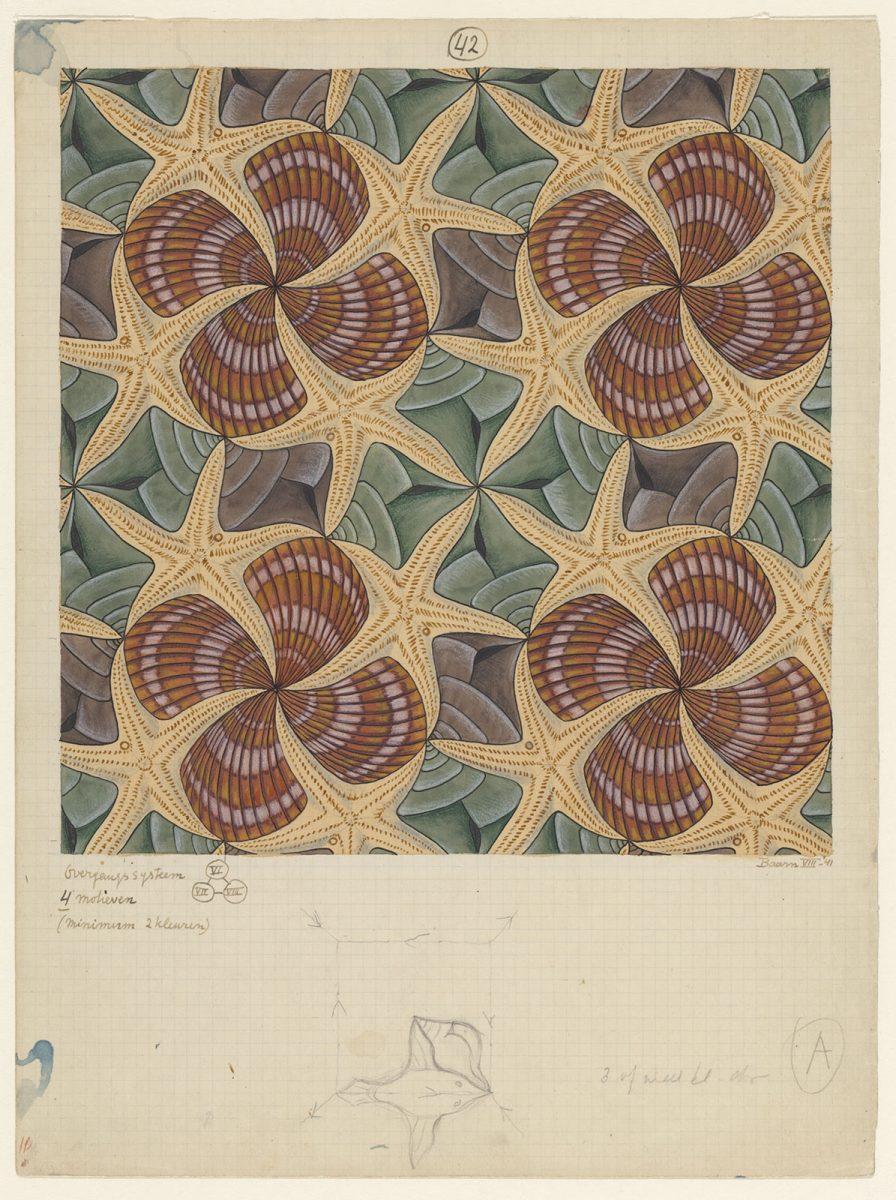
M.C. Escher, Regular division drawing with shells and starfish, no. 42, india ink, colored ink, colored pencil, watercolor, August 1941
True to form, Escher designed a tessellation for the tin. Tessellations are patterns of identical shapes that can be seamlessly put together and repeated endlessly. He opted for the sea star because, according to Mr Van der Grijn:
“only one animal is capable of covering the pyramid top without losing or changing its shape. …. So there were 12 sea stars. And when Escher, almost shyly, smiled and asked whether these could be ‘moulded in relief’, or embossed (to give it its technical name), that too was possible. Our technicians were completely under Escher's spell, his studio and his project. So much so, that virtually everything was possible. ”
The sea stars are interjected with striped sea shells. According to Mr Van der Grijn, Escher was not entirely satisfied with this decision, but “was willing to make a sacrifice” to comply with the technical preference of the factory. The result is this phenomenal tin. No matter what way round you turn or hold it, the pattern is always the same because of the icosahedron and its twenty identical triangular faces.
The disadvantage of this “anniversary tin” was that its eventual size was bigger than originally envisaged by the factory. Instead of 250 to 300 grams of bonbons, the tin could hold 400 grams, which translated into 700 kilograms of extra bonbons! The confectionary was supplied by two famous Dutch chocolate factories Droste and Verkade, each of which delivered half the required amount. Production costs were high: eight guilders per tin. At the time, the most expensive tin costed one guilder seventy-five. Although only 7,000 tins had been slated for production, far more were produced. “A comparatively high number of tins were produced as a reject allowance. However, because there were no rejects, we were left with quite a lot of empty tins after delivery.”
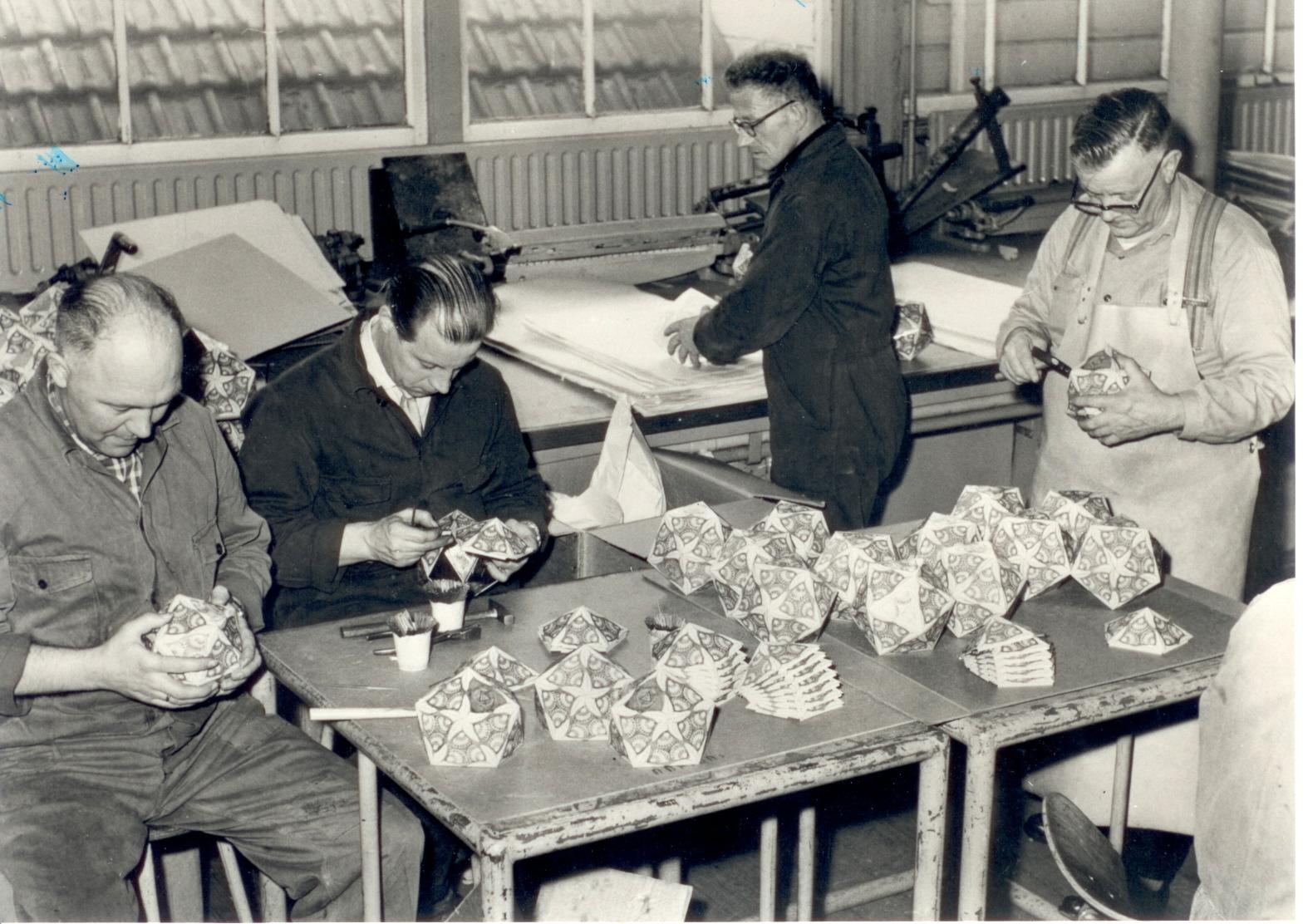
During production in Krommenie
According to Mr Van der Grijn's report, quoted extensively in this article, Verblifa were immensely proud of the anniversary tin.
“The icosahedron perfectly embodies the strengths of our company: versatile, decorative, embossers and tin manufacturer par excellence!”
Escher was subsequently gifted three one-dimensional pieces of a tin featuring the tessellation. In a letter of 7 April 1963 to Mr Bouvy from Verblifa, he reveals he was delighted with this gift. At long last, he could show all those who expressed an interest how the tin had been put together.
